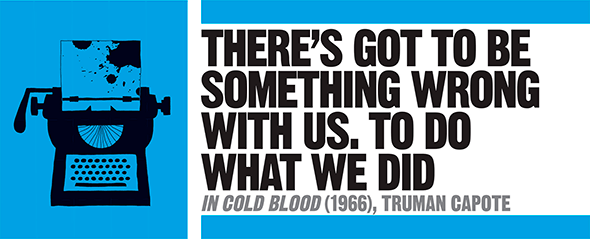The Literature Book (Big Ideas Simply Explained) (2016)


IN CONTEXT
FOCUS
New Journalism
BEFORE
Early 1900s Investigative journalists such as Lincoln Steffens and Ida M Tarbell blend literary techniques and journalism in articles that expose corrupt business and government practices.
1962 Journalist Gay Talese uses interviews, dialogue, and observation in a factual but literary article on boxer Joe Louis in Esquire magazine.
AFTER
1970 Tom Wolfe challenges traditional journalism with Radical Chic and Mau-Mauing the Flak Catchers, reporting in a lively observational style.
1972 Hunter S Thompson publishes the drug-fuelled Fear and Loathing in Las Vegas, the genesis of “gonzo journalism”, in which the writer plays an integral part in the story.
The term “New Journalism” was introduced by critics in the 1960s to describe the work of US writers such as Truman Capote, Norman Mailer, Tom Wolfe, and Gay Talese, who used literary techniques to relate non-fictional stories and present factual reporting dramatically. Capote’s theory that journalism could be forced to yield a new art form, the “nonfiction novel” (which he expounded in a 1966 interview in The New York Times), lay at the heart of his book In Cold Blood.
In 1959 Capote had read a newspaper report that offered an ideal subject on which to exercise his theory: a wealthy Kansas farmer, Herbert Clutter, and members of his family had been shot dead for no apparent reason. Assisted by his friend, author Harper Lee, Capote visited the scene and began researching the murder. In Cold Blood was published seven years later.
"I thought that Mr Clutter was a very nice gentleman … I thought so right up to the moment that I cut his throat."
In Cold Blood
Murder in Kansas
The book describes the murder, which occurred on 15 November 1959. There were four victims: 48-year-old Clutter, a church- going, hard-working man; his wife, Bonnie; his daughter, Nancy; and his son, Kenyon. The family were well respected and popular - their brutal slaying shocked the community. A local man said they were “gentle, kindly people, people I knew - murdered”.
In contrast the two murderers, Richard “Dick” Hickock and Perry Smith, were ex-convicts - misfits on parole from the Kansas State Penitentiary. Dick’s promise to Perry was that they would “blast hair all over them walls”. The two were caught and arrested in Las Vegas on 30 December 1959. Capote immersed himself in his subject, spending time with friends and relatives of the victims, local residents, police, prison warders, psychiatrists, and the murderers themselves. He did not record interviews, but scribbled down quotes and impressions afterwards.

Truth and embellishment
The end result is a remarkable work in which Capote constructs scene after scene, building up characters and allowing participants to tell their stories in their own words. The book was first serialized in The New Yorker magazine, and was an instant success. US journalist Jack Olsen said it was the first book to make true crime a “successful, commercial genre”. Even so, Capote was accused of having falsified or exaggerated events. He denied this falsification, though there is some evidence of embellishment.
Tom Wolfe wrote that In Cold Blood had given New Journalism “an overwhelming momentum”, and he went on to codify the features of the form in his 1973 book, The New Journalism. He stated that Capote’s novel incorporated all the form’s key techniques: first-hand witnessing of events; real dialogue; third-person narrative; and detailed description of minute life details, such as how the killers brushed their teeth. This created a near-factual reportage presented in the style of a novel, enabling readers to gain an understanding of events and characters that was all the more powerful for being based on real events.
TRUMAN CAPOTE

Born Truman Streckfus Persons in New Orleans on 30 September 1924, Capote had a troubled childhood. His parents divorced when he was four, and he was raised by relatives. He then rejoined his mother and her second husband, Joseph Capote, attending school in New York City and Greenwich, Connecticut. His career began with a string of short stories published in magazines such as Harper’s Bazaar and The New Yorker. His first novel, Other Voices, Other Rooms, was published in 1948 and established him as a significant writer. Capote was a controversial figure. A socialite, heavy drinker, and sometime drug user, he enjoyed a flamboyant lifestyle and lived openly as a gay man, which was unusual at that time. In later life he became reclusive, and died in Los Angeles on 25 August 1984.
Other key works
1945 “Miriam” (short story)
1951 The Grass Harp
1958 Breakfast at Tiffany’s
1986 Answered Prayers: The Unfinished Novel (published posthumously)
See also: To Kill a Mockingbird ✵ The Armies of the Night ✵ Fear and Loathing in Las Vegas